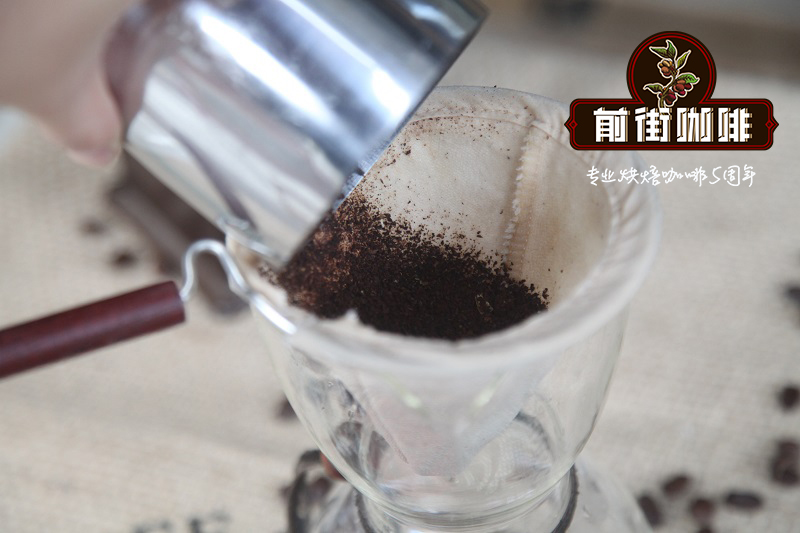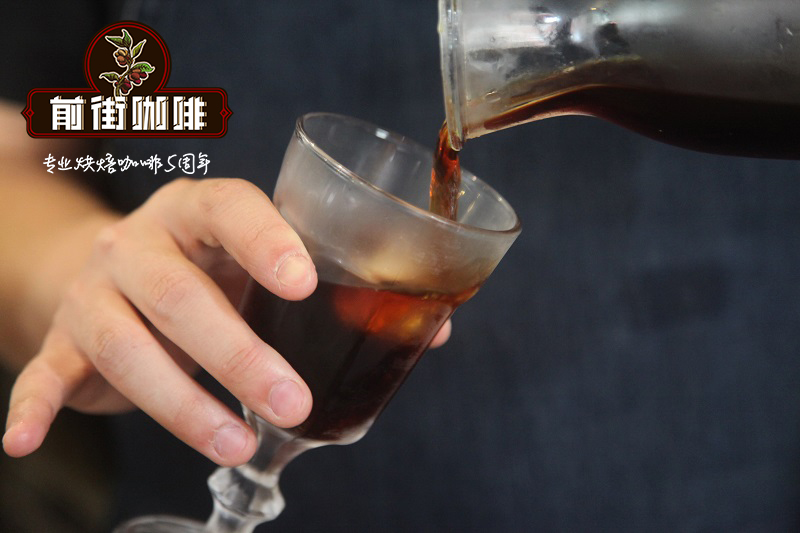French colonial Vietnam left the classic, what kind of French classic Vietnamese coffee?

Professional coffee knowledge exchange more coffee bean information please follow the coffee workshop (Wechat official account cafe_style)
In the 19th century, the French planted a large number of coffee trees in Vietnam. Although it is planted at a low altitude and most of the varieties are robastian coffee beans (Robusta), which are not sour and bitter, it is undeniable that Vietnam is now one of the largest producers of coffee beans in the world.
Influenced by France, locals use a perforated metal drip (phin) to make coffee, which is bittersweet, accompanied by charcoal burning and a deep chocolate aroma. Precisely because of the use of this drip, filter paper is not needed in the coffee making process, so the water used for brewing can absorb more tar and aroma and has a rich taste.
In addition, because there were not enough sources of fresh milk at that time, the French who liked lattes replaced condensed milk and became known as Vietnamese coffee (c à ph ê phin).
The traces of French colonization of Vietnam are not limited to French bread and meat sauce (p â t é) used in Vietnamese sandwiches. Vietnamese coffee, which many people flock to, is another classic.
Serious Eats reported that the French planted a large number of coffee trees in Vietnam in the 19th century. Although it is planted at a low altitude and most of the varieties are robastian coffee beans (Robusta), which are not sour and bitter, it is undeniable that Vietnam is now one of the largest producers of coffee beans in the world.
Influenced by France, locals use a perforated metal drip (phin) to make coffee, which is bittersweet, accompanied by charcoal burning and a deep chocolate aroma. Precisely because of the use of this drip, filter paper is not needed in the coffee making process, so the water used for brewing can absorb more tar and aroma and has a rich taste.
In addition, because there were not enough sources of fresh milk at that time, the French who liked lattes replaced condensed milk and became known as Vietnamese coffee (c à ph ê phin).
Although the French colonization gave birth to Vietnamese coffee, with the passage of time, the Vietnamese also developed a variety of unique coffee drinks.
Yogurt a chua c à ph ê
Yogurt was first introduced to Vietnam by the French and has since been used by locals in cuisine, whether it's fresh mango or wine, with yogurt, and coffee is no exception. It looks a little strange, but the rich yogurt and black coffee actually go well, as long as you mix it and you can drink it directly.
Egg coffee (c à ph ê tr coffee ng)
Egg coffee dates back to the 1940s, when there was a shortage of milk and eggs became a convenient substitute. Beat the egg yolk and condensed milk until it is light and fluffy, and then drink it with black coffee, you can also think of it as the Vietnamese version of Tira Misu.
Sinh t coffee c à ph ê
In recent years, Vietnamese coffee has gradually emerged in the ranks of smoothies, with popular local fruit juice shops offering drinks of fresh fruit with Vietnamese coffee, some with yogurt and cashews. In Hanoi, you can try banana avocado coffee smoothie (c à ph ê chu coffee I b shake). In Ho Chi Minh City, Sinh t coffee c à ph ê sapoche with tropical fruit pistachio is also a good choice with a touch of casserole.

Important Notice :
前街咖啡 FrontStreet Coffee has moved to new addredd:
FrontStreet Coffee Address: 315,Donghua East Road,GuangZhou
Tel:020 38364473
- Prev

Zhuoyue Cup Pacamara Variety | washed Coffee Bean style in FincaLaBendici ó n Farm, Nicaragua
Professional coffee knowledge exchange more coffee bean information please pay attention to the coffee workshop (Wechat official account cafe_style) Zhuoyu Cup Pacamara variety | Nicaragua FincaLaBendicin farm washed coffee bean flavor characteristics? The Maracaturra sector from LaBendicin is owned by Luis Alberto Balladarez Moncada Dipilto-Jalap in the north of Nueva Segovia.
- Next

Is the concentration of coffee in Vietnam high? Is Vietnamese coffee high in calories?
Professional coffee knowledge exchange more coffee bean information please follow the coffee workshop (Wechat official account cafe_style) Vietnamese coffee concentration is high come to Vietnam, we have to try their Vietnamese coffee. You can try some coffee shop chains first. Trung Nguyen and Highland are the more convenient ones.
Related
- Detailed explanation of Jadeite planting Land in Panamanian Jadeite Manor introduction to the grading system of Jadeite competitive bidding, Red bid, Green bid and Rose Summer
- Story of Coffee planting in Brenka region of Costa Rica Stonehenge Manor anaerobic heavy honey treatment of flavor mouth
- What's on the barrel of Blue Mountain Coffee beans?
- Can American coffee also pull flowers? How to use hot American style to pull out a good-looking pattern?
- Can you make a cold extract with coffee beans? What is the right proportion for cold-extracted coffee formula?
- Indonesian PWN Gold Mandrine Coffee Origin Features Flavor How to Chong? Mandolin coffee is American.
- A brief introduction to the flavor characteristics of Brazilian yellow bourbon coffee beans
- What is the effect of different water quality on the flavor of cold-extracted coffee? What kind of water is best for brewing coffee?
- Why do you think of Rose Summer whenever you mention Panamanian coffee?
- Introduction to the characteristics of authentic blue mountain coffee bean producing areas? What is the CIB Coffee Authority in Jamaica?

